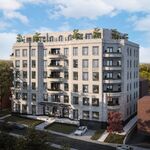junctionist
Senior Member
I'm starting to think that the Gardiner as psychological barrier is one of the greatest myths in the city. The fact is that the lake itself is not really a draw (especially in the colder months), since the city has evolved detached from the waterfront by industry over a century. Consequently, what we think of downtown is quite removed from the water (i.e Yonge and Dundas). Besides the Gardiner, it's also separated by the rail corridor, and a fairly boring and expansive condo and office zone.
The Gardiner simply wouldn't matter if there was a kind of Queen Street or entertainment district by the lake along with the density of the condos. Lots of Asian cities have massive expressways through quite vibrant areas. But the fact is that the downtown waterfront area has quite limited appeal. Torontonians gravitate towards areas which evolved from higher density Victorian commercial and residential areas. That's where the diversity of retail, entertainment, culture, and dining outdoes the waterfront.
Removing the Gardiner achieves little and it would be nice to see a shift in discourse to a more practical solution. We shouldn't curse the construction of that expressway, because for many kinds of trips, the car is quite fast and efficient. We shouldn't be so adamant on downgrading the infrastructure, but rather to lobby the government to continue to expand alternatives like public transit.
To conclude, proposal is obviously misguided in the amount of investment it would take for questionable gains and for the accessibility issues. But so is removing the Gardiner in the first place. It's best to make enhancements to it to improve perceived safety pedestrians, deck it to reduce noise or bury it. Costs can be offset by tolls.
The Gardiner simply wouldn't matter if there was a kind of Queen Street or entertainment district by the lake along with the density of the condos. Lots of Asian cities have massive expressways through quite vibrant areas. But the fact is that the downtown waterfront area has quite limited appeal. Torontonians gravitate towards areas which evolved from higher density Victorian commercial and residential areas. That's where the diversity of retail, entertainment, culture, and dining outdoes the waterfront.
Removing the Gardiner achieves little and it would be nice to see a shift in discourse to a more practical solution. We shouldn't curse the construction of that expressway, because for many kinds of trips, the car is quite fast and efficient. We shouldn't be so adamant on downgrading the infrastructure, but rather to lobby the government to continue to expand alternatives like public transit.
To conclude, proposal is obviously misguided in the amount of investment it would take for questionable gains and for the accessibility issues. But so is removing the Gardiner in the first place. It's best to make enhancements to it to improve perceived safety pedestrians, deck it to reduce noise or bury it. Costs can be offset by tolls.




